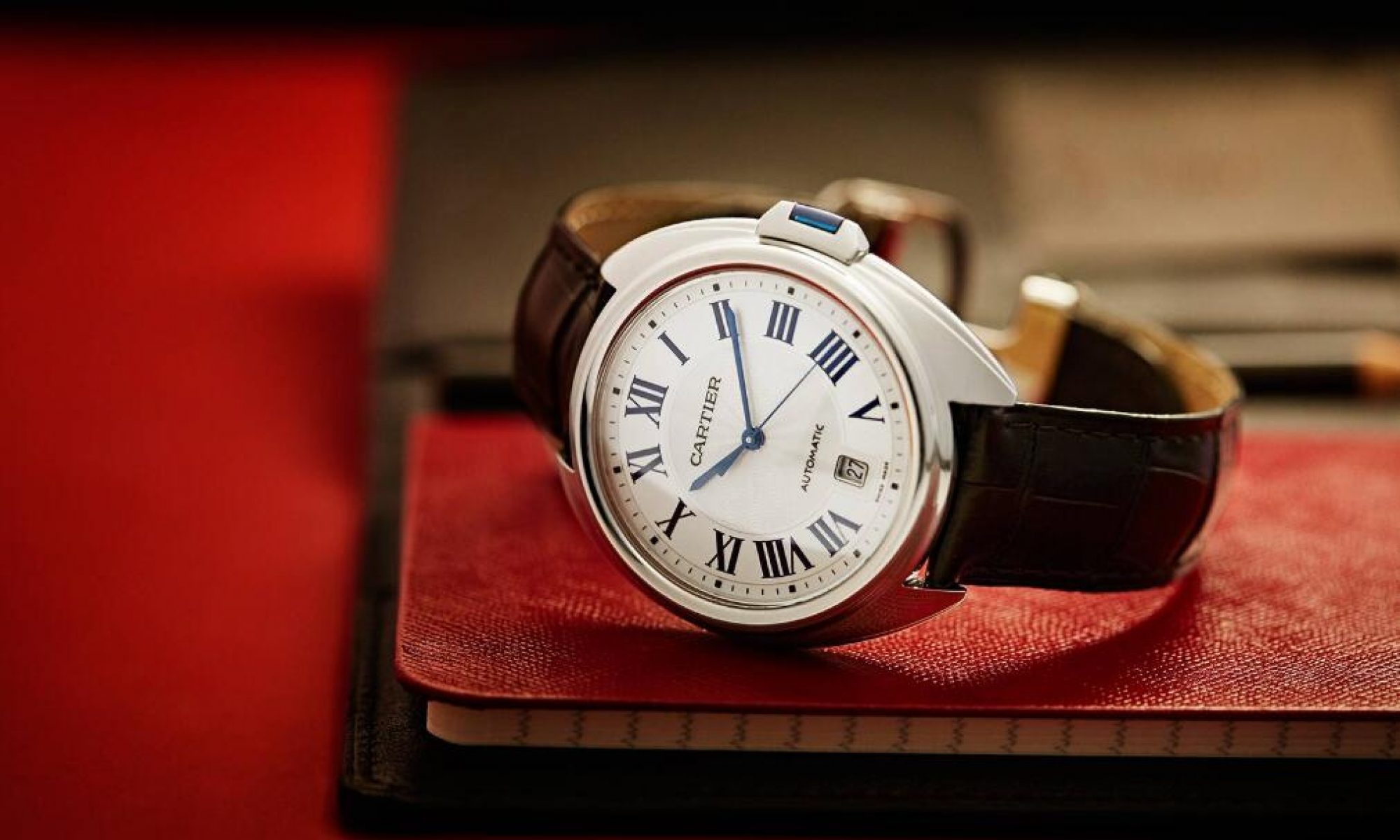The Cartier Tank Louis Cartier, or simply Tank L.C., is the most imitated watch in the world. Not even considering the fakes — some 5,000 of which Cartier highlighted by running them over with a bulldozer in 1985 — any rectangular watch with a vaguely similar look is called a Tank or, at least, Tank-style. Arguments can be had over what the ultimate wristwatch design is, but the Swiss made replica Cartier Tank L.C. watches is categorical.
Louis Cartier lived by the slogan “Never copy, only create” — four words that would come to drive the maison for generations. To understand the Tank L.C. as a product is to understand L.C. as a man, the Cartiers as a family, and Cartier as a brand. Pierre Rainero, Cartier’s Director of Image, Style, and Heritage, stresses the fact that Cartier thought about wristwatches unlike any of its peers in the early 20th century.
“It is the jeweler’s approach,” says Rainero, that allowed Cartier the “freedom to design shapes that don’t exist in the watchmaking universe.” Louis Cartier sought to make an aesthetically cohesive time-telling object that sat on the wrist rather than a purely functional watch.
The jeweler’s approach worked for Louis Cartier. His design credits include the Santos (1904), Tonneau (1906), Tortue (1912), Tank Normale (1919), Tank Cintrée (1921), and, of course, the Tank L.C. in 1922. As the list suggests, the watch — now considered the epitome of UK 1:1 Cartier fake watches‘ aesthetic — was Louis’ third Tank design. Introduced in 1922 as Tank à Bords Arrondis, “Tank with Rounded Edges,” the honor of carrying its designer’s name was not bestowed until 1924.
To be fair, in this era of wristwatch infancy, few watches carried model names. It’s safe to say that, regardless of the name, Louis, nor Cartier, nor the watch wearers of the time understood what they had with the Tank L.C.
‘True’ Vintage Cartier: The Story (1922-1960)
Louis Cartier was a third-generation Cartier jeweler. His grandfather, Louis-François, founded Cartier in 1847 at the age of 27. By 1873, Louis-François sold the business to his son, Alfred Cartier. It was Alfred’s three sons who built the foundation of the high quality Cartier copy watches we know today. From an early age, Louis, the eldest, along with his two brothers, Pierre and Jacques, had great ambitions to grow Cartier beyond Paris.
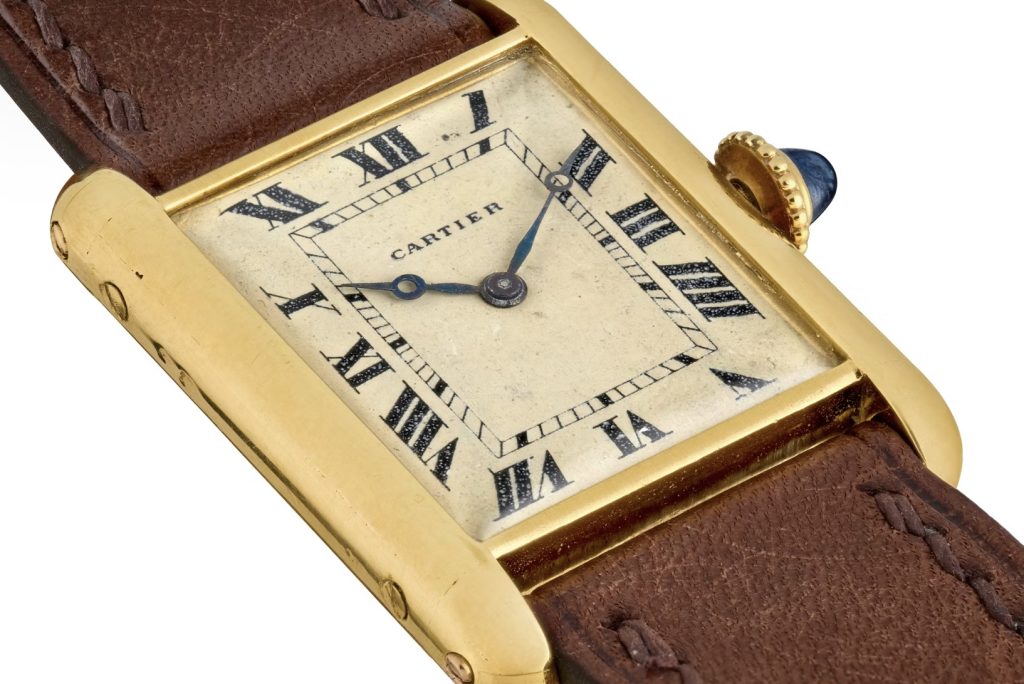
According to The Cartiers by Francesca Cartier Brickell, in 1893, Louis, then 18 years old, called a meeting with Pierre, 15, and Jacques, a mature nine. On the table was a map of the world. Louis divided it into thirds, laying out a plan to divide and conquer. Pierre would take the Americas, Louis would cover Paris and the rest of Europe, and Jacques was given Britain and her territories.
Sixteen years later, the plan devised in their childhood bedroom came to fruition. Jacques established a branch in London in 1902, and Pierre set up Cartier in New York in 1909.
Before 1960, no matter where you shopped, almost all best Cartier Tank replica watches were made in Paris. The production and assembly were done individually, watch by watch. Despite having no formal training in watchmaking, Louis was the “watch guy” of the three brothers. Louis was primarily a jeweler and, therefore, required partnerships to materialize his watch designs. This is where Edmond Jaeger enters our story.
Jaeger was a Paris-based watchmaker specializing in ultra-thin production and, since 1899, held a contract with Swiss manufacturer LeCoultre. When Louis Cartier began his wristwatch journey with the Santos, he started a relationship with Jaeger that would last decades. By 1907, the two men had signed a 14-year contract, and Cartier quickly became Jaeger’s predominant client. Jaeger produced ultra-thin cases and developed specific calibers to fit them, LeCoultre executed those designs, and Cartier artisans assembled the finished products. While this collaboration was one of the most sophisticated of its time, production was labor-intensive and slow. In 1929, 110 Tanks (of all types) were produced, and in 1932, that number dropped to a meager six.
Not only was Tank production incredibly low, but the Louis Cartier model was not yet the icon we know today. In examining vintage examples, it appears as though the Tank Normale and Cintrée were vastly more popular before the 1960s. The brand explored so many shapes and variants of the Tank that the production of any one model in serious quantity was not viable. Furthermore, macroeconomic headwinds of the 1930s and 1940s meant low demand for UK luxury super clone Cartier wristwatches.
‘True’ Vintage Cartier: The Watches (1922-1960)
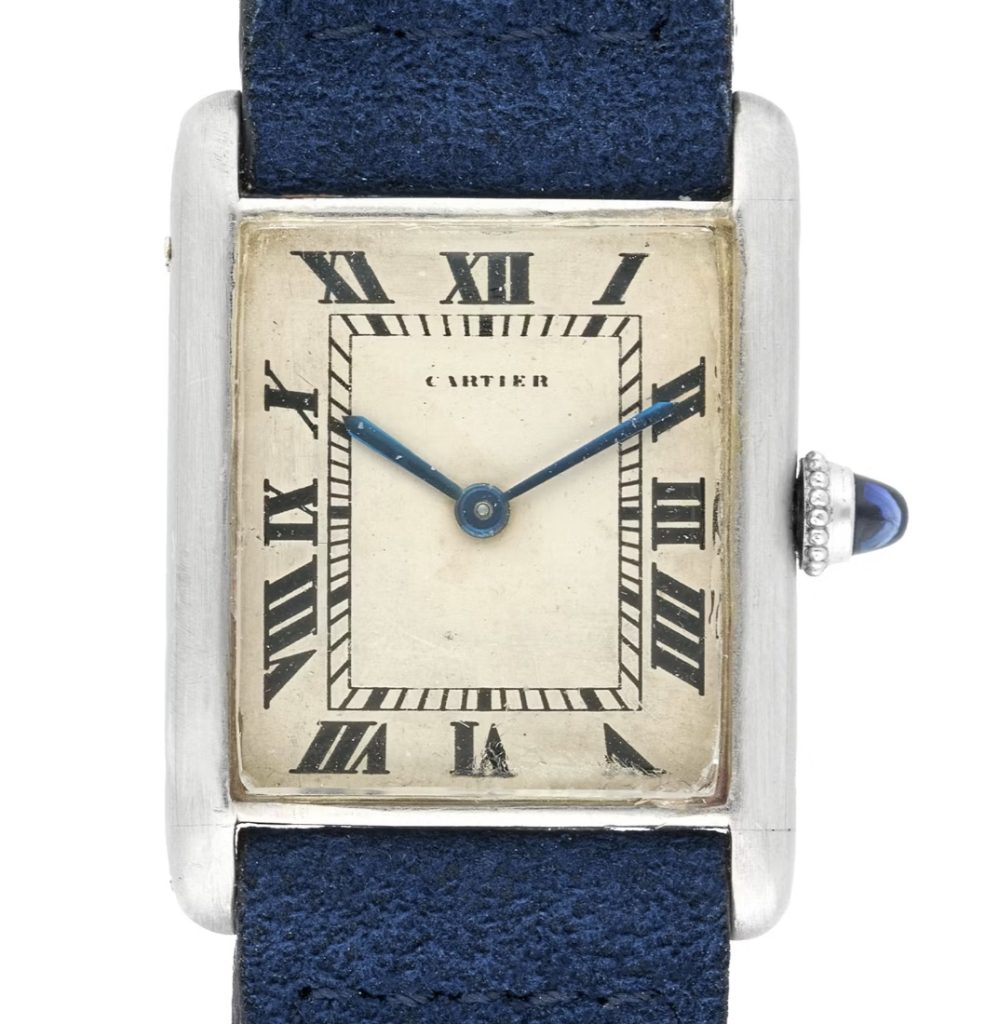
Tank L.C.s from this period are extraordinarily rare. Breguet hands were used for the early years, generally before 1940. The look is unique, especially when paired with the distinct matte finish of the dials. A pad printing process is very evident, many with small spots of white showing through the Roman numeral hour markers. While that may read as a flaw, in person, the vibe is more akin to an ancient fresco-wearing age with unmistakable charm. The Cartier signature is typically rendered in block font with a subtly flat “A,” yet the Cartier archives do recognize the less-common use of script signatures.
Casebacks are typically stamped with two serial numbers, one for the movement and one for the case. Prior to the mid-1920s, movements were signed “Cartier Paris”; after that, they were signed “European Watch & Clock Company.” EWC, as collectors call it, was established by Edmond Jaeger and Cartier for import purposes in 1921. The cases and deployant clasps are stamped with a small trapezoidal “EJ” hallmark, indicating the work of Jaeger.
The top replica Cartier Tank L.C. watches was offered in two sizes, most commonly referred to by a movement diameter of either 8 or 9 lignes. The 8-ligne Tank L.C. measures 28mm tall by 20mm wide, and the 9-ligne Tank L.C. measures 30mm tall by 23mm wide. These two sizes were produced in either yellow gold or platinum for over 40 years.
A House Divided: The Story (1960-1972)
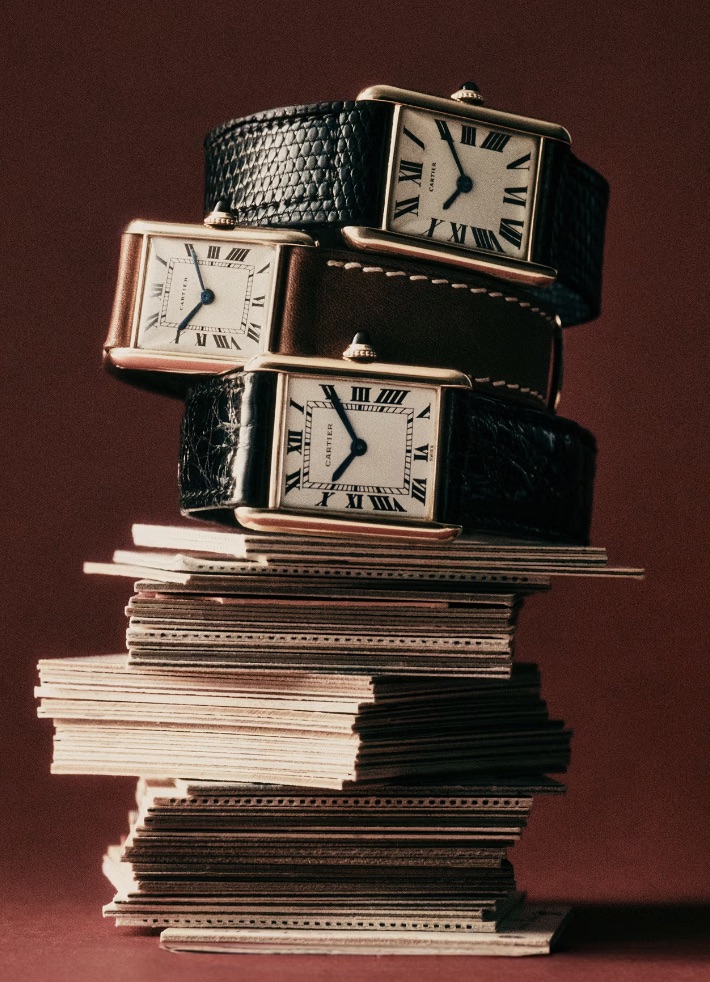
As a part of the brotherly divide-and-conquer plan, Cartier New York and Cartier London were structured as separate companies in 1919. To maintain the larger brand and ensure mutual prosperity, the three brothers all owned a portion of the other two branches. Trouble in this plan came with the fourth generation of Cartier jewelers.
Jacques passed away in 1941, and Louis died in 1942. After WWII, while young, Jean-Jacques Cartier assumed the position of his father, Jacques, by running Cartier London — that was the easy part. Difficulty came with Louis’ son, Claude Cartier, who inherited Paris but had his eyes set on New York. Technically, he did, in fact, inherit half of New York, but Pierre, the last brother standing and founder of said branch, was reluctant. In 1948, after years of family turmoil, Claude and Pierre swapped branches — the former took over New York, and the latter went to the flagship in Paris.
These quarrels of succession culminated in 1962 when, without informing the family, Claude sold Cartier New York. A generation-old covenant to offer the family the first right of refusal was skirted, and the Cartier triangle was officially broken.
While negative in the history of the Cartier family, this time of loss and Claude’s sale created a ripple effect that resulted in a major shake-up to the Tank L.C. product lineage. Before the 1960s, the AAA China fake Cartier Tank L.C. watches was sacred. It carried Louis’ name, was a mainstay of the catalog in all three branches, and, put simply, was not to be messed with. That all changed.
Coinciding with this opportunity, the Tank L.C. was suddenly a Hollywood darling. The 1960 romantic comedy Let’s Make Love, starring Yves Montand and Marilyn Monroe, was an onscreen romance turned real-life love affair. The international press swarmed the couple. All the while, on-screen and off, Yves Montand wore his Cartier Tank L.C. — a gift from his wife(!).
And so, adultery marks the genesis of the Swiss made copy Cartier Tank L.C. watches as an icon. Rainero confirmed that awareness of the Tank L.C. spiked in 1960 and, with it, sales — by an order of magnitude. Be it the Let’s Make Love scandal or changing tastes, 10 times more Tank L.C.s were sold in 1960 than in any year prior.
A House Divided: The Watches (1960-1972)
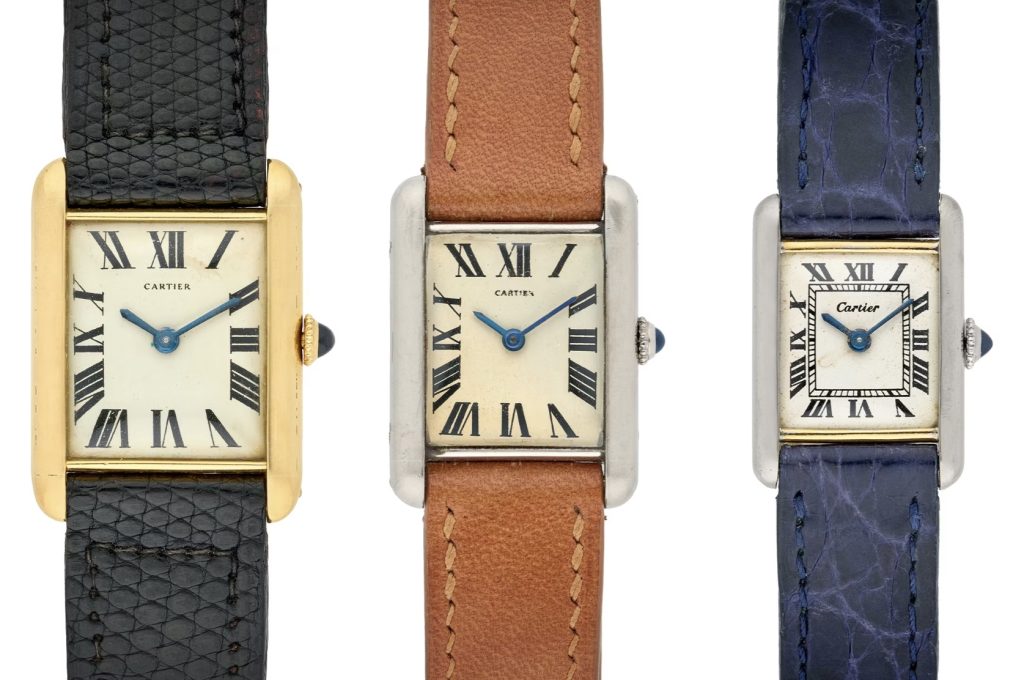
With increased demand and more freedom to riff on the Tank L.C., Cartier began to experiment. Jean-Jacques led the charge in London, where he started to produce Cartier replica watches wholesale in the early 1960s. Within the environment of London’s “Swinging Sixties,” a cultural revolution touching all facets of life, Jean-Jacques’ Cartier thrived. Working closely with metalworking workshop Wright & Davies, the Cartier London design team thought outside the box — this is where the Crash and Maxi Oval were born. As with Cartier Paris in the 1920s, each watch was made by hand, one by one. A standard wristwatch case like the Tank L.C. would take a craftsman 35 to 40 hours to produce.
London-made Tank L.C.s exemplify the free-thinking spirit of this branch while also respecting what the model means to Cartier. The tweaks were minimal. Most London L.C.s dropped the chemin de fer chapter ring, making them immediately recognizable today. Similar to Paris watches, typically, block Cartier signatures were used, but some watches are known to have a script signature, just like the Crash.
The London Tank L.C. was offered in three sizes: Small (26mm by 18mm); Medium (28mm by 21mm); and Large (31mm by 23mm). Case metal options were yellow gold, white gold, or, very rarely, a two-tone of both. Cases are stamped with London hallmarks to date production and a “JC” hallmark. Movements were sourced from Jaeger-LeCoultre (Edmond Jaeger and LeCoultre Inc. merged in 1937).
Jean-Jacques wasn’t the only one having a bit of fun in the 1960s. Cartier Paris introduced the first Mini in the late 1960s, measuring 23mm tall by 15.5mm wide. The Mini dropped the chemin de fer minute track for lack of space and is powered by a Jaeger-LeCoultre caliber 845. In the mid-1960s, Paris introduced the first Extra-Plat (Extra-Flat) Tank L.C., measuring the same 30mm by 23mm as the standard Tank but with a new case construction and thinner JLC caliber 838, resulting in a thickness of under 5mm. A standard Cartier Tank fake watches shop measures over 6mm thick.
Alongside the Extra-Plat and Mini, Cartier Paris continued production of the standard Tank L.C. The standard Paris L.C. was offered in two sizes: Small (28mm by 20mm) and Large (30mm by 23mm). Inside the Small is a JLC caliber 850 and inside the Large is a JLC caliber 818. Starting in 1967, dials were signed below six o’clock with “Paris.”
Across the pond, Cartier New York’s new owners had an issue in the watch category. While other items were either made in Cartier New York workshops or sourced locally, they could not source Cartier replica watches from Cartier Paris. So, we start to see some unique New York-retailed models like Steve McQueen’s “Super Cintrée,” as worn in 1968’s The Thomas Crown Affair. New York watches like these weren’t of the same quality as those sold in Paris or London, but the Tank L.C. was sacred even to the new owners.
Cartier New York produced at least two unique batches of Tank L.C.s in the 1960s and early 1970s. One is the legendary Audemars Piguet Tank L.C. Made in Switzerland with a Charles Dubois & Cie-made case (Poinçon de Maître #170), these are stamped “Cartier New York” inside the caseback and powered by an Audemars Piguet caliber 2001. Sizing is typical (30mm by 23mm), although with subtle design tweaks like broader brancards. The dial signature is a bit larger, as are the hands.
Even rarer is the Cartier New York “DiMaggio” Tank L.C. This batch was also made in Switzerland with a Max Fuchs-made case (Poinçon de Maître #38) but utilizes a Cartier-signed ETA caliber 2512. Similar to the AP Tank L.C., these have a larger dial signature and slightly thicker hands. The case size is standard, 30mm by 23mm. DiMaggio Tank L.C.s are quite rare and have garnered the nickname because “Joltin’ Joe” owned one later in his life.
Reunification: The Story (1972-1993)

Following Pierre Cartier’s death in 1964, Cartier Paris was quietly sold to American entrepreneurs Harry and Edward Danziger. By 1967, Cartier London was the only branch still within the family. Today, Cartier may be worried about clients flipping a Crash for a profit, but the Danzigers flipped all of Cartier Paris to Robert Hocq within a decade. Before purchasing the brand, Hocq designed a luxury lighter and signed a deal to market it under the Cartier name — and sales soared. He quickly realized the power of the Cartier name. By 1972, Hocq had purchased the Paris branch from the Danzigers, the first phase in his plan to own all of Cartier. Just two years later, London had fallen, and by 1976, New York followed suit, placing Cartier under one company’s control.
Under Hocq’s ownership and the guidance of his right-hand man, Alain Dominique Perrin, a watch product catalog was established for the first time. Production of watches moved from Paris and London to Switzerland thanks to a partnership with Ebel.
In 1973, the Louis Cartier Collection was introduced as the full offering of best quality Cartier replica watches. Of course, the Tank L.C. was a part of the collection — how could it not be? Cartier wristwatch production was maturing.
This standardization of Cartier fake watches site allowed the brand to capitalize on the rising popularity of its style. This was the era in which the Tank L.C. truly took hold as the epitome of that aesthetic. The split-branch Cartier of a decade earlier is fascinating, and the resulting watches are charming, but the messiness might have held back the Tank L.C. as a product.
Another big step forward for the Tank L.C. was the introduction of the Must de Cartier Tank in 1977. While these gold-plated Tanks are not L.C.s, their shape is similar and must be credited for further popularizing this iconic form.
Cartier went from selling less than 3,000 watches a year to hundreds of thousands thanks to the Must. The sheer quantity of Must de Cartiers made the L.C. all the more aspirational.
Reunification: The Watches (1972-1993)
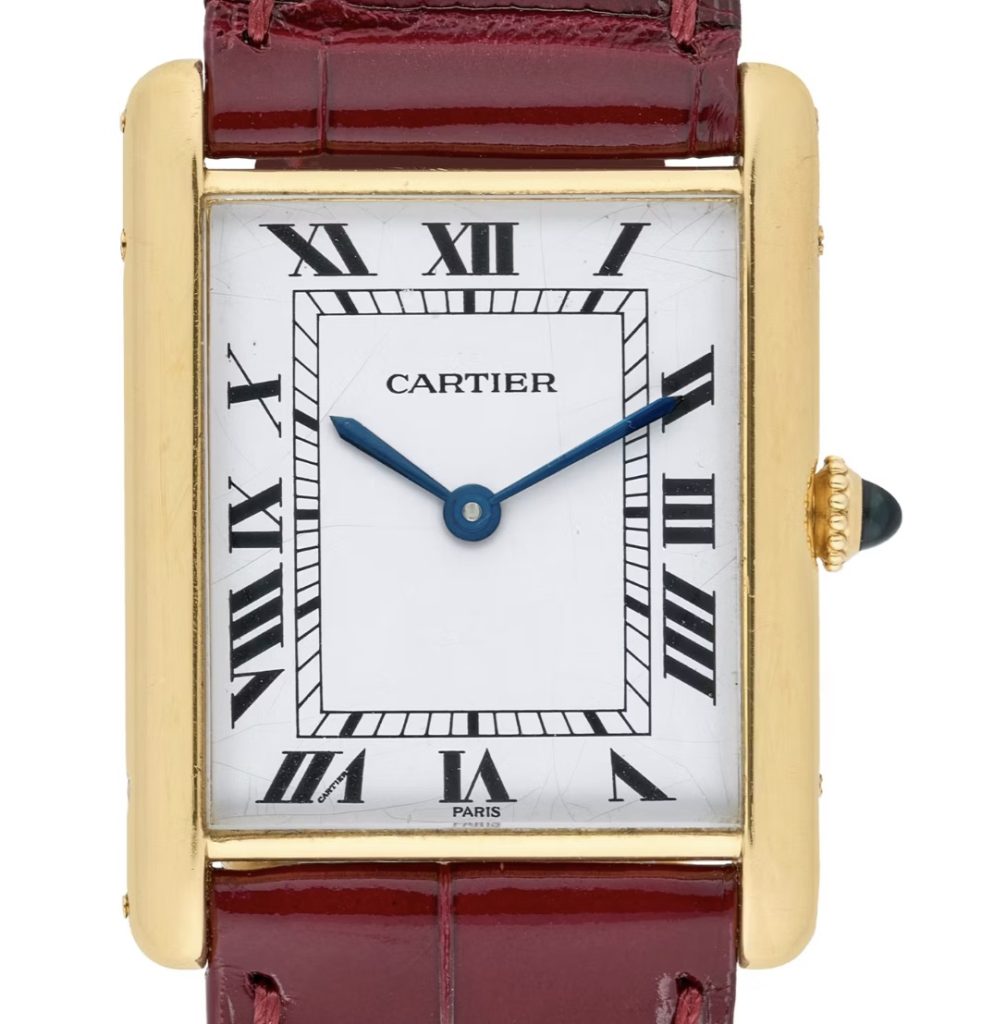
With production in Switzerland, the world of 1:1 quality replica Cartier Tank L.C.s watches was far more static and, for the first time, featured reference numbers. Put simply, there were five clear options. For standard L.C.s, a part of the 1973 Louis Cartier Collection, there were two sizes, both powered by an ETA caliber 2512. The Large, ref. 78086, measures 30mm by 23mm, and the Small, ref. 78087, measures 28mm by 21mm. The Extra-Plat, ref. 96019 was unchanged except for the movement, which was now provided by Frederic Piguet (caliber 21). An updated Extra-Plat, ref. 96065, which came in the 1980s, featured the same caliber and a slightly different case construction. The Jumbo Tank L.C., added in 1974, features an ETA automatic movement and was offered in two sizes. The Jumbo XL, ref. 17002, measures 34.5mm by 28mm, and the Jumbo, ref. 17011 measures 33.5mm by 25.5mm. All five of these references were produced in yellow gold and white gold.
Reunification Tank L.C.s are mostly systematic, but we do see a few outliers like the ref. 19001 with a moonphase, the quartz-powered ref. 88105, the very rare ref. 67117 Extra Small, as well as gem-set variants of some of the above, like the ref. 96010 and ref. 96068 Extra-Plats.
Richemont: The Story (1993-Today)
The reunification of Cartier was the first step in the brand’s journey to modernization. In the early years of the luxury group era, Johann Rupert and Richemont entered the picture.
Rupert’s relationship with Cartier dates back to the late 1960s when Hocq first stepped in. Needing funding for his reunification, Hocq approached Anton Rupert, Johann’s father, who bought in for a 20% stake in Cartier America and a license to produce Cartier-branded cigarettes. Similar to Hocq, the Rupert family saw the power and potential of the Cartier brand through this licensing deal.
Johann Rupert wanted to establish a luxury group and, by 1993, had expanded the family’s stake to acquire a majority of Cartier. Richemont was off and running, and Cartier was its crown jewel.
Since its acquisition by the second-largest luxury holding company in the world, Cartier has transitioned into an existence as both a watchmaker and jeweler. With Richemont, production was brought in-house to state-of-the-art facilities in Switzerland. Continual investment both at the commercial level and in high-watchmaking has established Cartier as the second largest watch brand in the world, according to Morgan Stanley and LuxeConsult’s 2023 Seventh Annual Swiss Watcher.
Richemont: The Watches (1993-Today)

Under Richemont, Tank L.C. references are nearly countless. As with most modern watch brands, more fake Cartier watches for men are being manufactured than ever before, and models are often tweaked slightly. Collectors are particularly drawn to neo-vintage L.C.s from the 1990s under the reference number 1600. These can be further split into two buckets — Pre-CPCP and CPCP. CPCP is short for Cartier Paris Collection Privé, an enthusiast-focused collection of vintage-inspired models launched in 1998. Ref. 1600s are essentially updated Extra-Plat Tank L.C.s in the classic 30mm by 23mm size with guilloché dials. Pre-CPCP examples are devoid of “Paris” branding underneath the Cartier signature at 12 o’clock.
Beyond CPCP and limited editions, a core selection of Tank L.C.s is always present, as has been the case since 1922. While Richemont has expanded Cartier’s catalog exponentially over the years, the Tank L.C. has remained faithful to its original design. Options in various precious metals and sizing at any one time may change, but at the core, the L.C. has never strayed too far. Typically, exploration has been left to other Tank diffusion lines like the Must and Solo. You just don’t mess with an icon.
Twelve Tank L.C. options are currently offered by Cartier, and it’s important to note and commend the sizing. The modern Large L.C. measures 33.7mm by 25.5 — a footprint that directly traces back to the 1974 Jumbo — and the current Small L.C. is 29.5mm by 22mm, an infinitesimal deviation from the 9-ligne L.C. from 1922.
The Cartier Tank L.C. Today
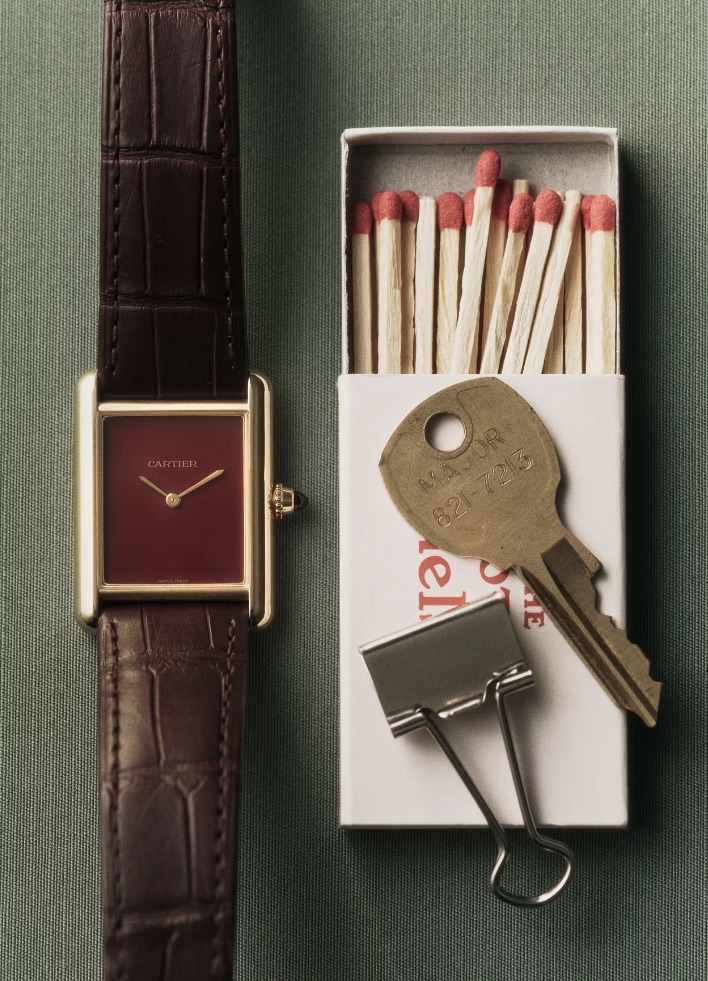
Over the past few years, Cartier has introduced modern novelties, some in gem-set configurations, to push the Swiss movements Cartier Tank L.C. replica watches forward. Last year’s (2023) set of novelties included four new dials: Tri-gold, Three Gold, Green lacquer-effect, and Red lacquer-effect. And 2024 saw the revival of the Tank L.C. Mini.
These are all slight tweaks on a classic design that offer a Tank L.C. for every Cartier customer. While “new” models, these references do not stray too far from the 102-year history of the original Tank L.C. The colored lacquer-effect dials call back to the first Must models of the 1970s, and the Mini is a near one-to-one revival of the late-1960s Cartier Paris Mini. This mix of progression with respect for the past sets Cartier and, in particular, the Tank L.C. apart.
Amidst corporate reshuffling for the better half of the last century and Cartier’s relentless ambition to define itself in the watch space, the Tank L.C. never wavered. As a product, this watch is considered so perfect that it may teeter on the edge of boring — but boring can be dependable. It’s how the sight of a groom wearing a Tank L.C. to his wedding may seem obvious, but at the same time, undeniable. Not unlike seeing a father pushing a stroller with a well-worn Rolex Submariner on his wrist. It’s the watch he bought when he “made it”; it’s the watch that has served as his trusty companion through life’s twists and turns. Just as the Submariner is the definitive sports watch, the Cartier Tank L.C. is the definitive dress watch.
Close your eyes and think of China 2025 Cartier fake watches; you probably see the Tank L.C. It’s a design so familiar that it needs no marketing; it’s a product that you inherently know about and will always be there if you want it.
